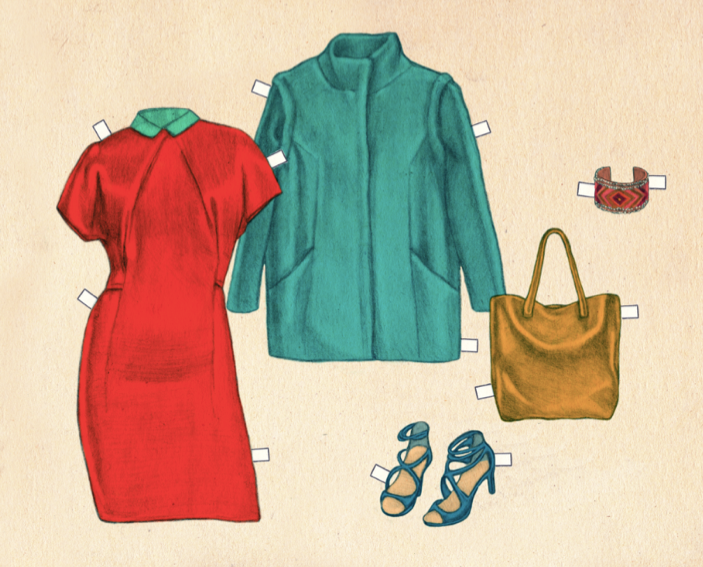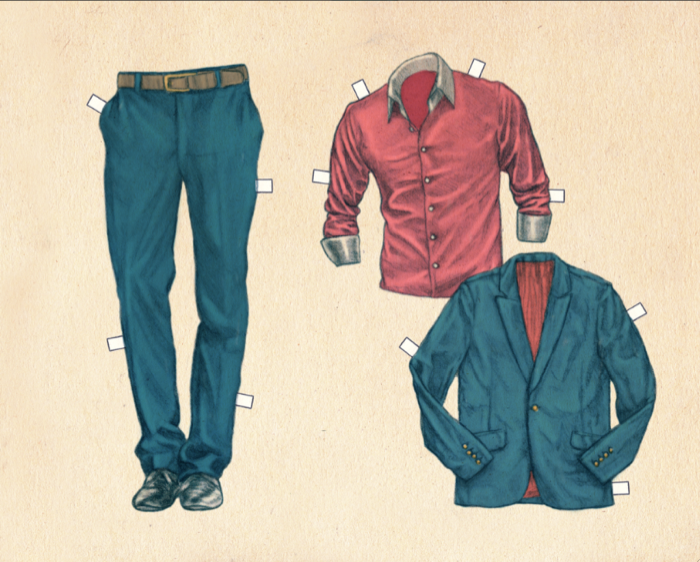THE THIRD AND FINAL instalment of Dr Anna Akbari’s series of conversations continuing from Vestoj‘s fourth issue, ‘On Fashion and Power’. Speaking with individuals who each hold positions of relative power within their particular industry, Akbari reveals how our choice of clothing reflects and shapes our vocation, speaking more broadly about how we wear power and the often under-recognised significance of this relationship. The following interviews with two individuals in very different lines of work; Gabriella Biro, Retail Manager at the American store Gypsy, and David Katz, Litigator and Managing Partner at David Katz and Associates LLP, New York, show the subtle, but nevertheless remarkable, tensions and visual cues used in dressing help to form our sense of self and professionalism. It might be the groomed appearance of luxury designer clothes, or a ‘three-season wool, four-button Pal Zileri suit in dark charcoal grey with thin chalk stripes, white shirt with a narrow collar and narrow black tie, single-buckle black shoes – and red underwear,’ – the way we dress to appear powerful unequivocally involves attention to detail and care in appearance, and is by no means accidental.
***
Gabriella Biro, retail store manager at Gypsy, Palm Beach, Florida and Nantucket, Massachusetts.
Anna: What does power look like to you?
Gabriella: It is very empowering to be knowledgeable enough to help high profile customers. I have a whole team working for me and I have the power to teach these girls to be the best in the field and to be more advanced in their positions. I have a lot of influence over how the store looks and how I handle the merchandise that comes in. I have to be in control of everything that is related to the business.
Anna: What’s your power uniform?
Gabriella: Bright, fun, trendy and stylish clothes that fit me perfectly.
Anna: In your industry/position, what is the most disempowering look or visual?
Gabriella: An unkempt look with a bad attitude.
Anna: Describe the power hierarchy in your industry/field, using only visual indicators.
Gabriella: The leader/owner of the company has the luxury to wear high-end brand names and very expensive merchandise that is always in season or just came off the runway. These are special items and only people in this field and or who are very interested in fashion will recognise it. The rest of the company wears similar, less expensive versions of these items.
***
David Katz, Litigator and Managing Partner at David Katz and Associates LLP, New York.
Anna: What does power look like to you?
David: Demeanour – the way you present yourself to whomever your audience is, whether a judge, a jury, clients, prospective clients, colleagues or staff. Each audience requires some sort of quiet confidence that manifests itself visually, whether it’s an appropriate suit, a tie and a jacket. You have to show appropriate seriousness given the situation. If I’m at a conference with a judge, it can be a more relaxed look. If I’m at trial with a jury, it’s going to be a dark Italian navy suit or a dark charcoal grey suit and a white shirt. Shoes should be well-polished.
Anna: What’s your power uniform?
David: A three-season wool, four-button Pal Zileri suit in dark charcoal grey with thin chalk stripes, white shirt with a narrow collar and narrow black tie, single-buckle black shoes – and red underwear, of course. I don’t wear cufflinks or a watch. As I got older and more confident, I did away with the watch, it was really more of a costume than function. I don’t wear something unless it serves some utility in my professional dress (which isn’t the case in my personal dress). I wear glasses, and might do a hip frame, depending on the audience, but a more conservative frame for a trial.
Anna: In your industry/position, what is the most disempowering look or visual?
David: To be dishevelled, for instance to have an ill-fitting shirt or suit or an undone top button and loose tie, or a shirt collar sticking up above the jacket collar, or else if the back of the collar is up too high. These details send a message of carelessness – not paying attention to detail. If you look in the mirror and you miss that, what else are you not paying attention to?
Anna: Describe the power hierarchy in your industry, using only visual indicators.
David: There’s a difference between an authority figure and competence. It may be wrong to assume that if someone is disheveled they’re incompetent, but at the outset, I’ll give someone a greater degree of respect if they’re put together properly. There’ve been plenty of times when I’ve been the best dressed guy in the room, but that doesn’t mean that I’ve had the best case. But it has generally worked in my favour. However, when I’m not in professional mode, I change my look completely.
Anna Akbari is a writer and sociologist. She teaches at the department of Media, Culture and Communication at New York University.

